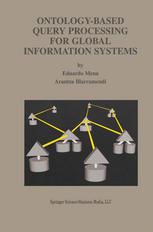

Most ebook files are in PDF format, so you can easily read them using various software such as Foxit Reader or directly on the Google Chrome browser.
Some ebook files are released by publishers in other formats such as .awz, .mobi, .epub, .fb2, etc. You may need to install specific software to read these formats on mobile/PC, such as Calibre.
Please read the tutorial at this link: https://ebookbell.com/faq
We offer FREE conversion to the popular formats you request; however, this may take some time. Therefore, right after payment, please email us, and we will try to provide the service as quickly as possible.
For some exceptional file formats or broken links (if any), please refrain from opening any disputes. Instead, email us first, and we will try to assist within a maximum of 6 hours.
EbookBell Team

4.4
102 reviewsThis work is a revision of the doctoral dissertation of Eduardo Mena pre sented to the Department of Computer Science and System Engineering at the University of Zaragoza (Spain) in November 1998 [Mena 98]. The OBSERVER system was developed as a result of this Ph.D. thesis. This book is composed of eight chapters. In Chapter 1 we introduce our rationale for writing a book about systems that process queries in global information systems. Then in Chapter 2 we review the techno logical context for our work, including distributed and heterogeneous environments and the use of ontologies. We also compare related work to our own. Chapter 3 presents our proposed global system architecture for query processing in global information systems. The main modules in the architecture and the main steps given to process a query are briefly introduced. Chapters 4 through 7 provide a detailed description of each query processing step. In Chapter 4 we detail the steps needed to access the data corre sponding to a query formulated over an ontology. All the aspects related to distribution, structural and semantic heterogeneity, and restricted query capabilities of the underlying data repositories are considered in this chapter. The main features of the mapping information that relates ontologies and data repositories are also described. Finally, we show the process of generating appropriate plans to access each involved reposi tory and the correlation of the answers coming from different reposito ries.